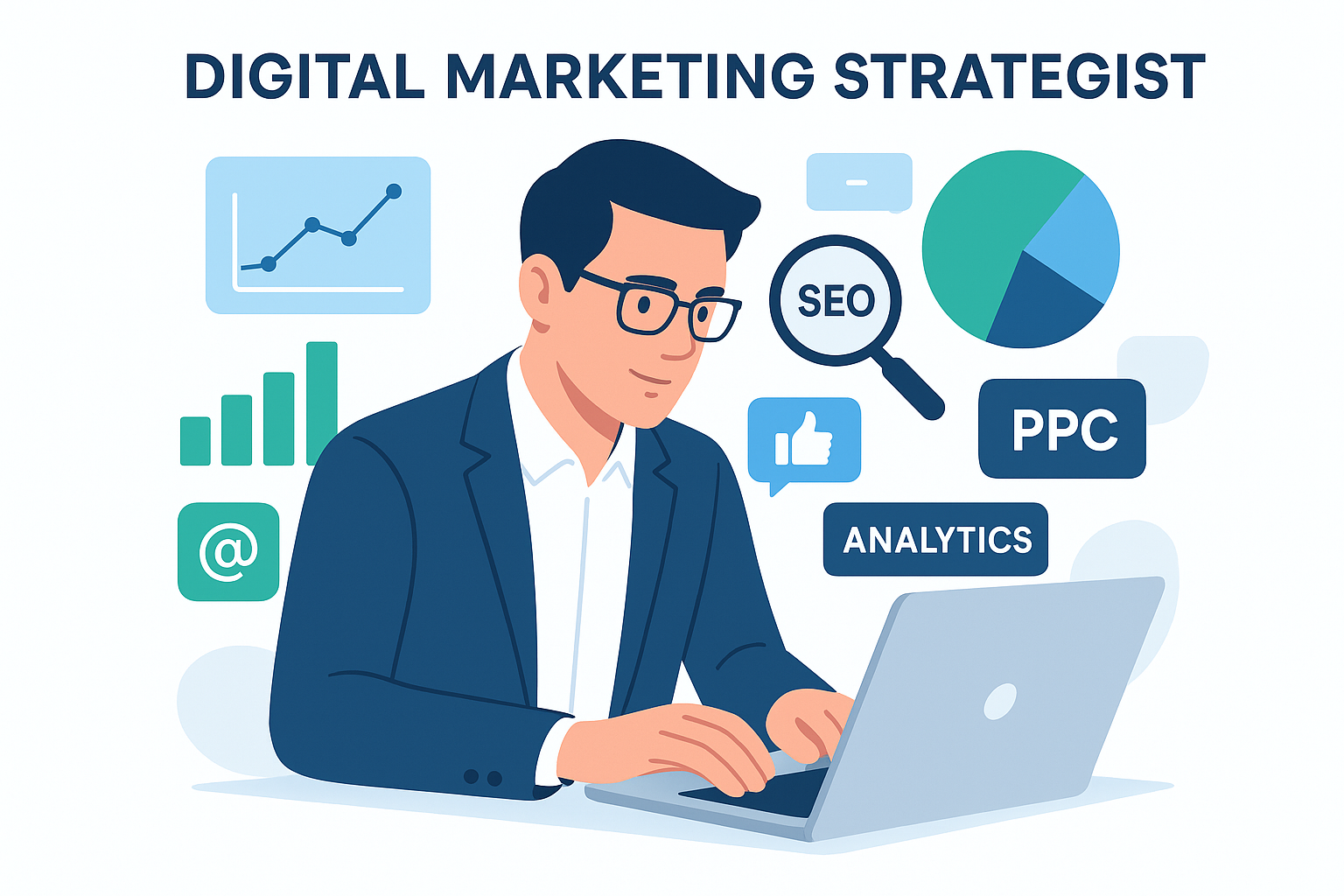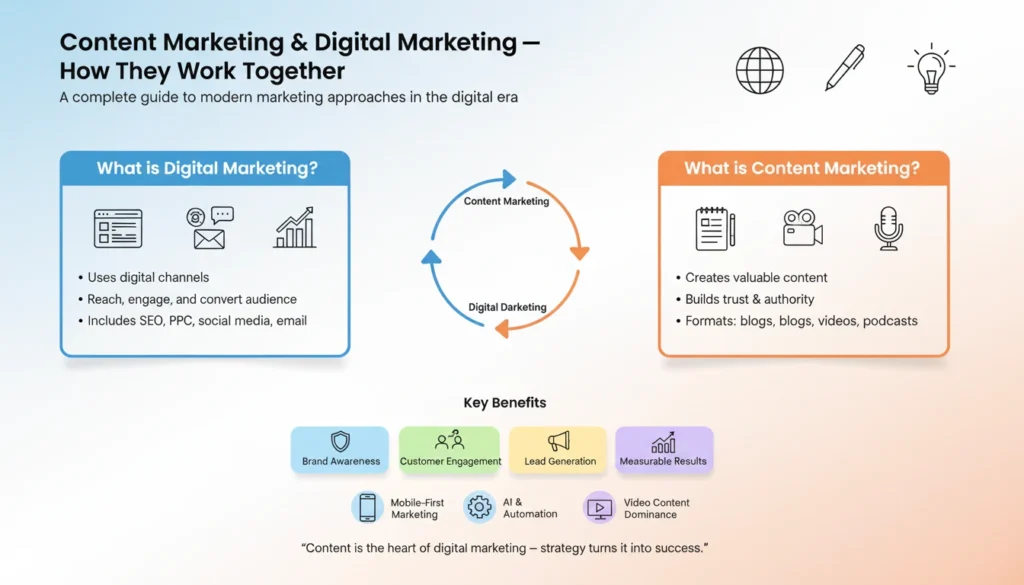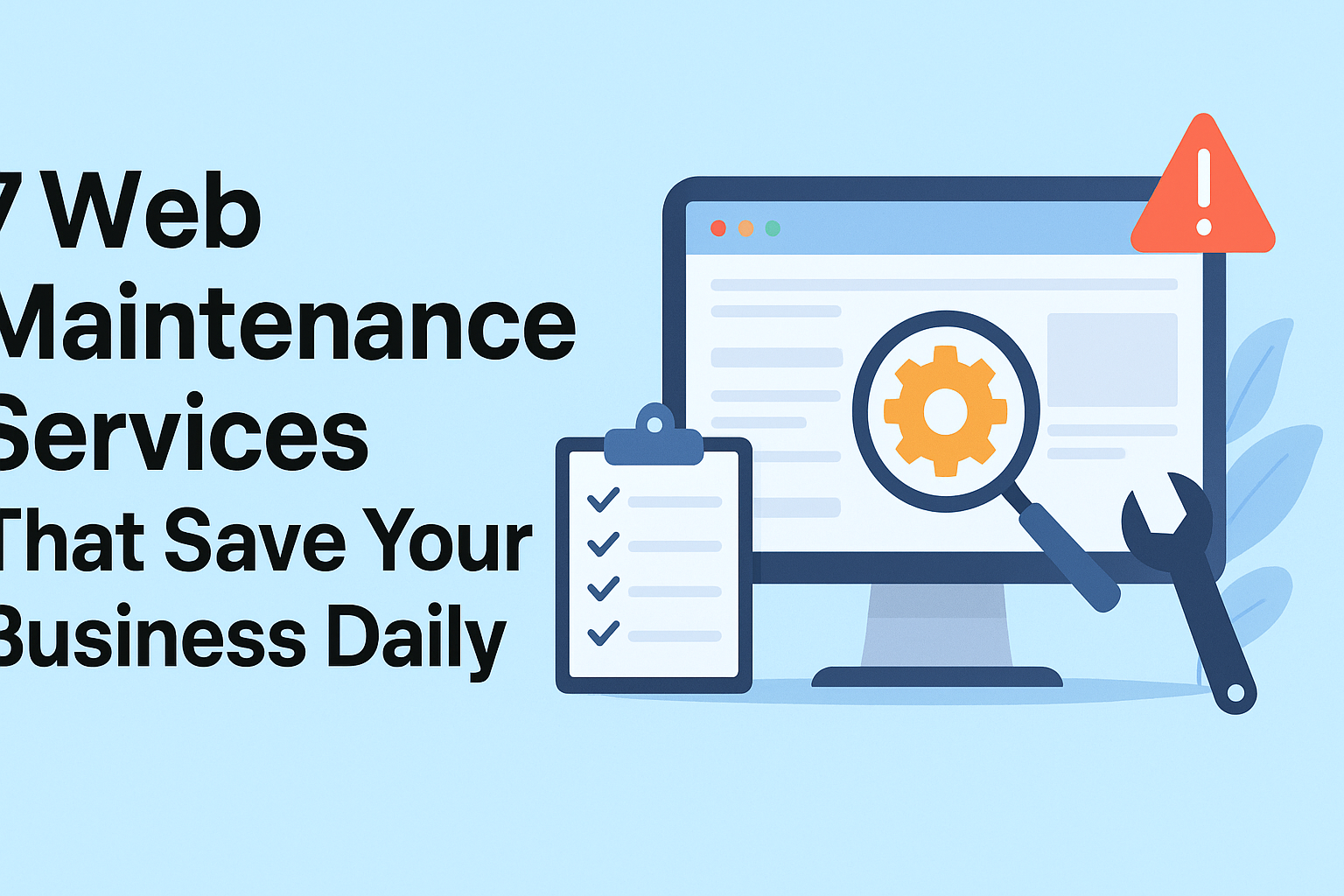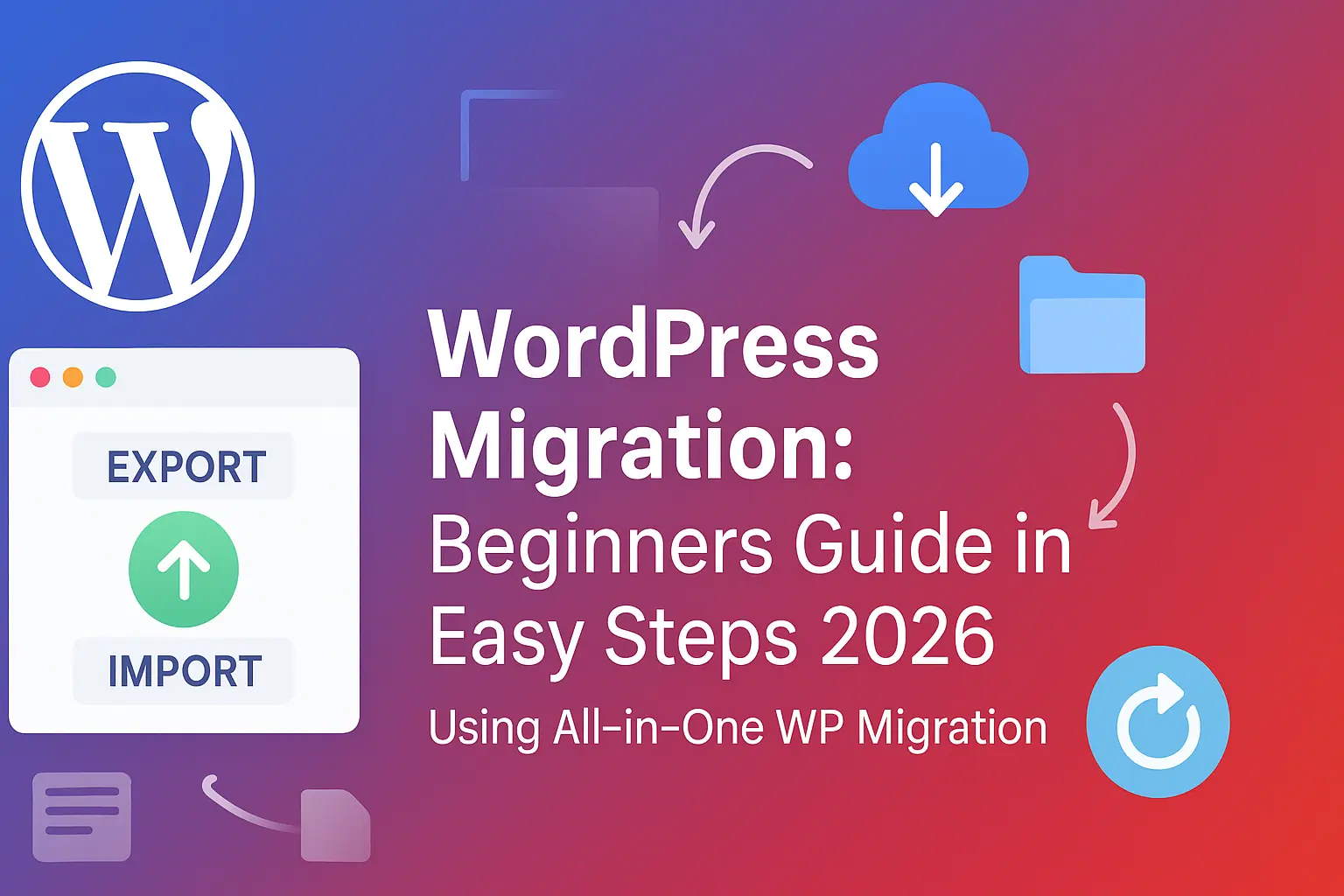Check out
7 Proven Ways to Become a Digital Marketing StrategistIn the current competitive environment, Content marketing and digital marketing have revolutionized how companies establish their online presence. These tactical methods help brands build measurable results with their target audiences while producing quantifiable outcomes. Gaining insight into the potent synergy between these approaches opens up previously unheard-of possibilities for long-term business growth.
There is increasing pressure on modern marketers to produce measurable results across several channels at once. This thorough guide outlines five tried-and-true tactics that leverage the advantages of both fields to help organizations effectively allocate resources and maximize their impact.

Content marketing and digital marketing are two essential strategies that together shape a brand’s online success. While digital marketing covers all online promotional activities, content marketing focuses on creating meaningful, valuable content that attracts and engages the right audience.
Key Elements of Content and Digital Marketing Include:
- Strategic Content Creation: Developing informative and engaging content blogs, videos, and posts tailored to audience needs and brand goals.
- SEO Integration: Crafting optimized content that improves visibility, boosts search rankings, and drives organic traffic.
- Audience Engagement: Delivering personalized and interactive content that strengthens relationships and builds long-term trust.
- Multi-Channel Promotion: Using platforms like social media, email, and paid ads to distribute content and expand reach.
- Brand Authority & Consistency: Maintaining a unified message across all channels to build credibility and reinforce brand identity.
- Performance Optimization: Tracking analytics and refining strategies for better engagement, conversions, and ROI.
Together, content marketing and digital marketing create a powerful online ecosystem attracting audiences, building trust, and driving sustainable business growth.

To draw in and hold on to well-defined audiences, content marketing is a strategic approach that focuses on producing and disseminating useful, pertinent content. In contrast to aggressive promotional messaging, this methodology places a higher priority on providing real value through blog posts, videos, infographics, podcasts, and other formats.
The cornerstone is having a thorough understanding of audience needs and meeting them with creative content that informs, amuses, or motivates. Creating a thorough buyer persona that directs topic selection, tone, and distribution channels is essential to producing successful content creation. Studies consistently demonstrate that this strategy produces lead generation that is three times as much as conventional outbound techniques.
The foundation of successful strategies is evergreen content, which offers enduring value and keeps drawing visitors months or even years after it is published. This long-term marketing strategy positions brands as reliable information sources and increases topical authority within particular industries.
Digital marketing encompasses all promotional activities conducted via electronic devices and online platforms. Among the many strategies used to reach customers where they spend a lot of time online are SEO, SEM, PPC advertising, social media marketing, email marketing, and many more.
Unprecedented options for performance tracking and targeting are available in the digital strategy landscape. In contrast to traditional advertising, data-driven optimization is made possible by the ability to precisely measure each click, view, and conversion using analytics tools like Google Analytics.
Granular control over audience demographics, interests, behaviors, and even purchase intent is possible with modern paid advertising platforms. Throughout the marketing funnel, this precision targeting maximizes conversion rate potential while reducing wasteful ad spend.
Although the terms are frequently used interchangeably, there is a significant difference between content marketing and digital marketing. Within the larger ecosystem of content marketing, digital marketing functions as a distinct subset that prioritizes value-driven content over direct advertising.
The channels and infrastructure for reaching target audiences with content are provided by digital marketing. Digital platforms play a major role in content distribution, but not all digital marketing is dependent on content production. Without requiring a lot of content creation, PPC advertising and display campaigns can produce results right away.
Another significant distinction is brought to light by the comparison of short-term and long-term marketing. While some digital tactics provide immediate website traffic and conversions through paid channels, content strategies usually take months to develop organic reach and authority.
Content Marketing vs Digital Marketing
| Aspect | Content Marketing | Digital Marketing | Best Application |
|---|---|---|---|
| Primary Focus | Value & Education | Promotion & Sales | Building trust vs driving action |
| Timeline | Long-term investment | Flexible timeframes | Authority vs quick wins |
| Approach | Inbound marketing | Outbound + Inbound | Attraction vs interruption |
| Measurement | Engagement metrics | Conversion rate | Relationship vs transaction |
| Cost Structure | Lower ongoing costs | Variable by channel | Sustainable vs scalable |
Conducting in-depth audience research and search intent analysis is the first step in creating a successful content strategy. All decisions that follow are based on an understanding of the information that target customers actively seek out and the manner in which they prefer to consume it.
Consistent publication is guaranteed by a documented content calendar, which also preserves flexibility for timely subjects. This methodical strategy maximizes both long-term traffic and brief visibility spikes by striking a balance between trending topics and evergreen content.
Essential elements include:
- Detailed buyer persona development
- Comprehensive keyword research for SEO optimization
- Multi-format content creation planning
- Strategic content distribution across channels
- Regular content performance analysis
Along with user engagement, technical SEO considerations should be incorporated into content optimization. In addition to improving user experience, well-structured articles with informative headers, meta descriptions, and internal linking raise their search engine ranking.
Proficiency in a variety of platforms, each with distinct functions within the customer journey, is essential for success. While adjusting content to audience behaviors and platform-specific expectations, omnichannel marketing guarantees consistent messaging.
Direct audience engagement and community development are made possible by social media marketing. Depending on the target demographics and content types, platforms such as Instagram, Twitter, and LinkedIn offer different benefits. Frequent communication increases loyalty and brand awareness.
By sending permission-based messages straight to subscribers’ inboxes, email marketing offers a remarkable return on investment. Tailored campaigns support customer retention goals by nurturing leads through the conversion funnel and preserving relationships with current clients.
For all-encompassing visibility, search engine marketing blends strategic PPC advertising with organic SEO initiatives. Paid campaigns give time-sensitive promotions or the launch of new products instant exposure, while organic approaches establish long-lasting topical authority.
Each piece of content should support specific marketing goals that are in line with overarching business goals. Strategic planning guarantees that resources are directed toward high-impact initiatives, whether the goal is lead generation, brand awareness, or customer retention.
Traffic is converted into actionable leads by landing pages tailored for particular campaigns. Strong call to action components direct users toward desired actions, such as making purchases, setting up consultations, or downloading resources.
To facilitate continuous nurturing, an effective lead magnet offers valuable resources for contact information. Information sharing is justified by the perceived value of e-books, templates, webinars, and exclusive research reports.
Beyond natural distribution, content promotion also includes strategic alliances and paid amplification. Paid promotion is especially beneficial for video marketing content because of social media platforms’ algorithmic prioritization.
Marketing automation allows for sophisticated personalization at scale while streamlining repetitive tasks. These systems monitor prospects’ behavior across various touchpoints, sending pertinent messages in response to particular behaviors or periods of inaction.
Marketing automation tools dynamically segment audiences using demographics, past purchases, and engagement patterns. Instead of sending generic broadcasts, this segmentation allows marketers to deliver precisely targeted messages that appeal to particular subgroups.
Analytics tools and marketing automation software combine to provide thorough performance visibility. Opportunities for campaign optimization are found by monitoring KPIs such as open rates, click-through rates, and conversion rate metrics.
Key automation applications include:
- Welcome sequence delivery for new subscribers
- Abandoned cart recovery campaigns
- Lead scoring and sales team notification
- Re-engagement campaigns for inactive contacts
- Post-purchase follow-up sequences
Decisions based on data distinguish successful campaigns from unsuccessful ones. By keeping an eye on KPIs across all platforms, one can learn what appeals to audiences and what needs to be changed or removed.
Clear benchmarks must be established prior to campaign launch in order to achieve measurable results. By comparing projected and actual performance, one can determine which strategies are effective enough to scale and which ones require improvement.
Critical metrics include:
- Website traffic sources and behavior patterns
- Engagement metrics like time on page and bounce rate
- Lead generation volume and quality scores
- ROI calculations for each channel
- Customer journey progression rates
The subjects, formats, and distribution strategies that elicit the greatest audience response are revealed by content performance analysis. Optimization insights are obtained through A/B testing of headlines, images, call-to-action placement, and content length.
Blog posts that answer frequently asked questions and problems build authority and garner organic reach. In-depth manuals and tutorials offer audiences useful content that they actively seek out, which organically attracts targeted traffic by aligning search intent.
Blog SEO optimization guarantees that content is found by search engines and reaches the intended audience. With time, search ranking positions are improved by well-placed keywords, appropriate header structure, and high-quality backlinks.
Infographics increase shareability on social media by using visual storytelling to simplify complex information. Viewers retain 95% of messages delivered through video compared to 10% through text, demonstrating that video marketing is more effective than text alone at grabbing attention.
Interactive content like quizzes, calculators, and assessments boosts audience engagement dramatically. While gathering information that guides future choices about content strategy, these formats offer participants individualized outcomes that they find valuable.
Storytelling creates feelings that facts by themselves cannot. In crowded markets, brand storytelling humanizes businesses and helps them stand out. Genuine stories about the beginnings of the business, client achievements, or staff experiences have a profound emotional impact.
Creative content that teaches and entertains accomplishes two goals at once. Content becomes memorable and shareable when it contains humor, inspiration, or unexpected viewpoints, which naturally expands its audience beyond its original audience.
SEO remains foundational for a sustainable online presence without ongoing advertising costs. Technical optimization, quality content creation, and strategic link building collectively improve visibility for relevant searches.
Search intent understanding ensures content matches what searchers actually want. Informational queries require educational content, while commercial intent searches demand product-focused pages with clear call-to-action elements.
PPC advertising delivers immediate visibility for competitive keywords where organic ranking proves difficult short term. Strategic bid management and ad copy testing maximize ROI while minimizing cost per acquisition.
Through frequent exposure on pertinent websites, display advertising increases brand awareness. Retargeting campaigns greatly increase the efficiency of the conversion funnel by re-engaging past visitors who left without converting.
Direct communication and community building around common interests are made possible by social media marketing. Frequent engagement encourages loyalty and offers insightful input for improving content strategy and product development.
Platform-specific methods take into account the various expectations and behaviors of users. Instagram places more emphasis on aesthetic appeal and lifestyle alignment, whereas LinkedIn content tends to be more professional and educational.
It takes specialized resources to maintain consistent campaign management and content creation. Regardless of team capacity limitations, marketing automation ensures timely communication while reducing manual workload.
Planning a content calendar guarantees strategic alignment across all publications and avoids last-minute rushing. Creating tasks in batches increases productivity while upholding quality standards.
It’s still difficult to demonstrate a definite return on marketing expenditures, especially for long-term marketing campaigns. Contribution to business growth goals is made clearer by putting in place appropriate tracking systems and attribution models.
Rather than being vanity metrics, the choice of KPIs should represent actual business impact. Just as customer retention frequently turns out to be more valuable than new acquisition, lead generation quality is more important than quantity.
Multiple disciplines are becoming more and more necessary for marketing roles. Technical proficiency is enhanced by communication skills, which facilitate efficient stakeholder management and teamwork.
Continuous learning keeps strategies current as algorithms, consumer behaviors, and competitive landscapes evolve. Testing new platforms and tactics while maintaining core proven methods balances innovation with stability.
Campaign optimization, audience analysis, and content creation are all transformed by the integration of artificial intelligence. Astute marketers use these tools to increase productivity while preserving human creativity that has real resonance.
As customers seek experiences catered to particular interests and behaviors, expectations for personalization keep growing. Customized content can now be delivered at a scale that was previously unattainable thanks to advanced marketing automation software.
Voice and visual search require adapting SEO strategies and content formats. Optimizing for conversational queries and image recognition ensures continued visibility as search behaviors evolve.

What is digital content marketing?
Digital content marketing is creating and sharing valuable content online to attract and engage audiences through channels like blogs, videos, and social media. It focuses on providing useful information rather than direct promotion to build trust and drive business growth.
Which is better, digital marketing or content creation?
Content marketing and digital marketing aren’t competing options; content marketing is actually a vital component within the broader digital marketing ecosystem. The best approach combines both: using quality content creation to build trust and authority while leveraging various digital marketing channels like SEO, social media, and paid advertising to distribute that content effectively and achieve measurable business growth.
how are content marketing and seo connected in digital marketing
Content marketing creates the valuable information that search engines want to rank, while SEO optimizes that content with keywords, technical elements, and structure to improve search ranking. Together, they drive organic reach by ensuring quality content gets discovered by the right audience through search engines.
what is content marketing and why is important in digital marketing
Content marketing is creating and sharing valuable information like blog posts, videos, and infographics to attract and engage audiences rather than using direct advertising. It’s crucial in digital marketing because it builds trust, establishes brand awareness, generates lead generation, and supports all other digital channels like SEO and social media marketing with substance that drives business growth.
Gaining a strong competitive edge in today’s crowded market requires mastering both content marketing and digital marketing. The five tactics listed offer workable frameworks for creating all-encompassing strategies that produce long-term business growth.
A dedication to ongoing learning, adaptation, and optimization is necessary for success. Regardless of changes in the market, businesses that invest in developing a thorough understanding of their audiences, producing real value, and strategically distributing across the right channels will prosper.
Modern marketing excellence is built on the synergy between strategic digital strategy execution and compelling content. Companies that adopt this integrated strategy set themselves up for sustained success and deep connections with clients that produce reliable outcomes.




